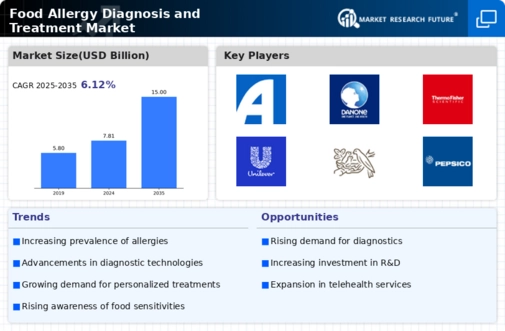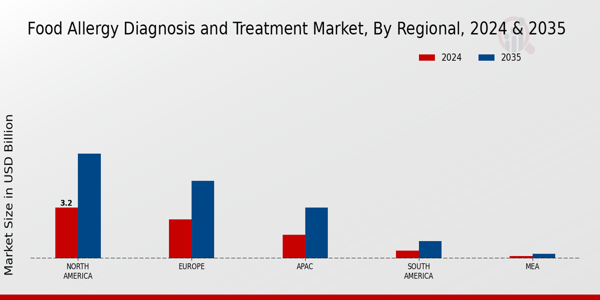Market Trends
Key Emerging Trends in the Food Allergy Diagnosis Treatment Market
The market trends of the food allergy diagnosis and treatment market have been witnessing significant evolution and growth in recent years. With an increasing prevalence of food allergies globally, the demand for accurate diagnosis and effective treatment options has surged, driving innovation and investment in this sector.
One prominent trend in the food allergy diagnosis market is the development of advanced diagnostic technologies. Traditional methods for diagnosing food allergies, such as skin prick tests and blood tests, are being complemented by newer, more precise techniques like component-resolved diagnostics (CRD) and molecular testing. These advanced diagnostic tools offer healthcare providers and patients greater insights into specific allergens, helping to tailor treatment plans and improve patient outcomes.
Furthermore, there is a growing emphasis on improving the accessibility and affordability of food allergy testing. As awareness of food allergies increases, more individuals are seeking testing services, leading to a greater demand for convenient and cost-effective diagnostic solutions. Companies in the market are responding by developing point-of-care testing devices and expanding distribution networks to reach a wider patient population.
In addition to diagnostics, the treatment landscape for food allergies is also undergoing significant transformation. Historically, avoidance of allergenic foods and emergency management of allergic reactions were the primary strategies for managing food allergies. However, there is now a growing focus on developing immunotherapy-based treatments that aim to desensitize patients to specific allergens.
Immunotherapy, which includes oral immunotherapy (OIT), sublingual immunotherapy (SLIT), and epicutaneous immunotherapy (EPIT), has shown promise in clinical trials for reducing allergic reactions and improving quality of life for patients with food allergies. These treatments work by gradually exposing patients to increasing doses of allergens, helping to build tolerance over time.
Another emerging trend in the food allergy treatment market is the development of biologic therapies targeting key pathways involved in allergic responses. Monoclonal antibodies that block specific immune mediators, such as immunoglobulin E (IgE), have demonstrated efficacy in reducing the severity of allergic reactions in patients with severe food allergies. These biologic therapies represent a novel approach to managing food allergies and offer new hope for patients with limited treatment options.
Moreover, the regulatory landscape surrounding food allergy diagnosis and treatment is evolving to ensure the safety and efficacy of new products entering the market. Regulatory agencies are working closely with industry stakeholders to establish clear guidelines for clinical trials, product approval, and post-market surveillance of food allergy diagnostics and treatments. This collaborative approach aims to foster innovation while safeguarding patient health and well-being.
Overall, the food allergy diagnosis and treatment market is poised for continued growth and innovation in the coming years. With advances in diagnostic technologies, novel treatment modalities, and supportive regulatory frameworks, healthcare providers and patients alike can expect to see improved outcomes and quality of life for individuals living with food allergies. As research continues to unravel the complexities of food allergies, the market is likely to see further advancements that will shape the future of allergy care and management.















Leave a Comment